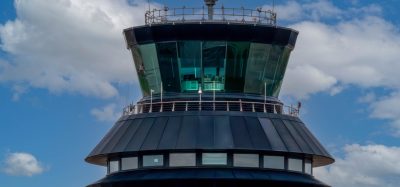60 Seconds with the ATM Policy Institute | It’s time to talk ATC
Posted: 2 May 2017 | David McMillan | Chair | ATM Policy Institute, Roy Manuell, Digital Editor | No comments yet
In the second part of a series of articles entitled ‘It’s time to talk ATC’, David McMillan, Chair of the ATM Policy Institute think tank offers an insight into current challenges.


- 1. What is the single greatest challenge facing ATM at present?
Traffic continues to grow rapidly and the current technologies, based as they are on WWII technologies, simply cannot cope. We need to use new technologies to make ATM smarter, as well as more efficient and safer. However, to just do that is to miss a huge opportunity to make it customer-focused and able to add value to the airports, airlines and passengers.
- Here at International Airport Review, we are very aware of the threat drones might present to airport safety. What do you feel needs to be done?
Like it or not, drones are going to be part of our future. The current approach of stridently treating all drones as a clear and present danger is not working and will not work. We need to understand the drone industry, which is not the same as the aviation industry, and we need to find ways to make the technology work for us. In Europe, the European Commission’s U-Space initiative, which is UTM plus, is a good start.
- Why is it so important that ATM is reformed?
It seems remarkable that even as the benefits of airline and airport liberalisation are generally taken as a given in developed markets, there is little appetite for the liberalisation of ATM. Without that reform it is impossible to believe that we will get customer-focused services that allow each airline to use ATM to suit their business models, in exactly the way they use airports and other services.
Failure to reform the system will also put it at risk of being unable to cope with the expected growth and new and more complex demands being put on it – as well as being able to find a suitable pricing model for the future.
- How specifically do envisage these reforms should take place?
Clearly, any change must be done without impacting safety or the continuing delivery of quality services. The reform of ATM services at airports, where are number of airports have now used market forces to renegotiate tower services is a good guide. Costs are down, there has been no disruption and airlines and airports are happy.
- Imagine we are having this conversation in a year’s time. What do you hope will have changed in the world of ATM?
I hope that the work of the ATM Policy Institute is, by then, starting to get traction and there is a real debate underway, industry wide. With luck, people will be seeing that what we are advocating is sensible and that we are starting to put forward a first roadmap to achieving sensible change.
Join our free webinar: Transforming Airport Security – Innovation, Impact, and the Passenger Experience
The landscape of airport security is undergoing a profound transformation, driven by evolving threats, technology, and passenger expectations. This webinar focuses on how AtkinsRéalis has been transforming security processes at some of the world’s busiest airports with smarter, more adaptive solutions.
Date: 4 Nov | Time: 14:00 GMT
REGISTER NOW TO SECURE YOUR SPOT
Can’t attend live? No worries – register to receive the recording post-event.
Related topics
Air traffic control/management (ATC/ATM), Airport Collaborative Decision Making (A-CDM), Drones, Regulation and Legislation

















